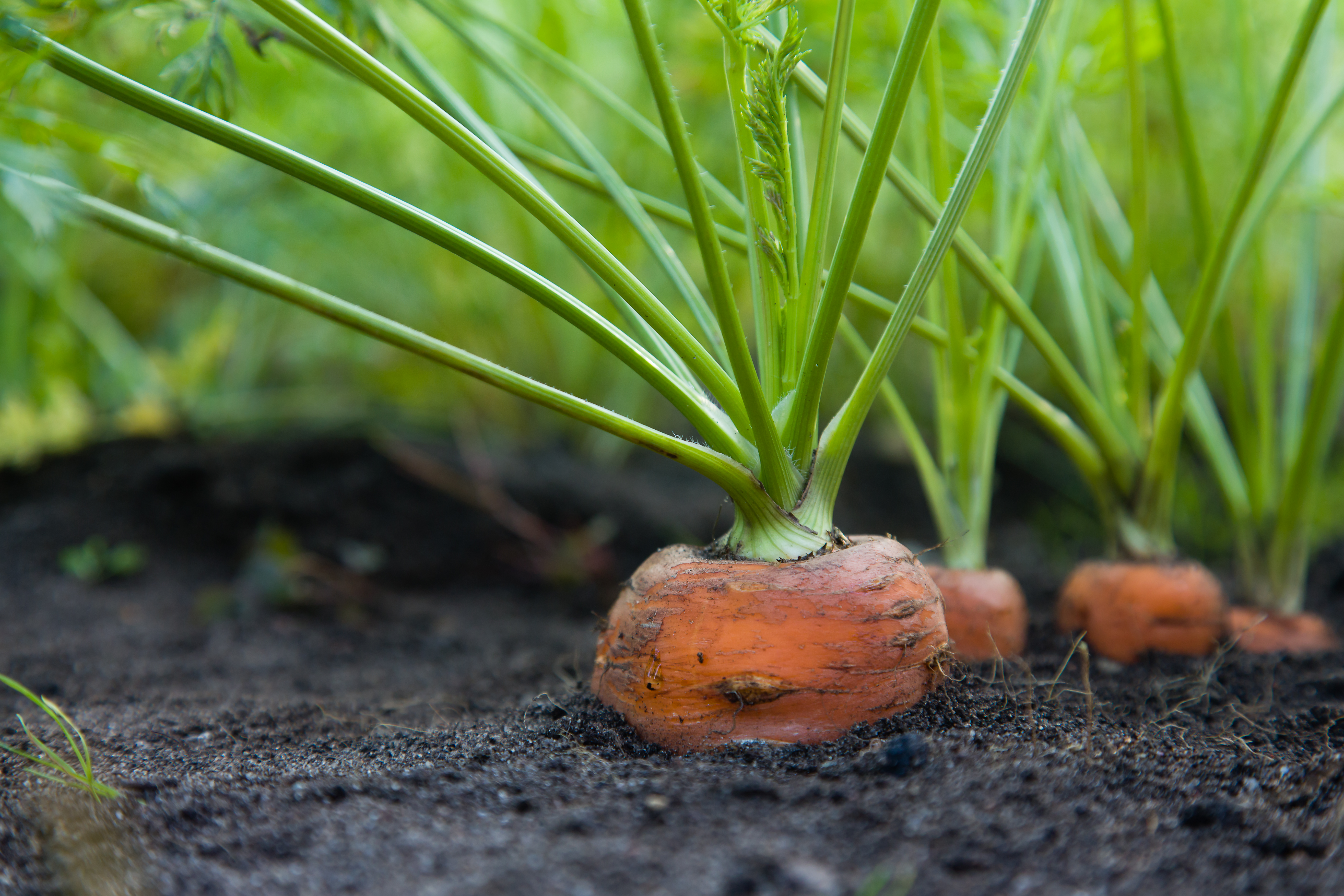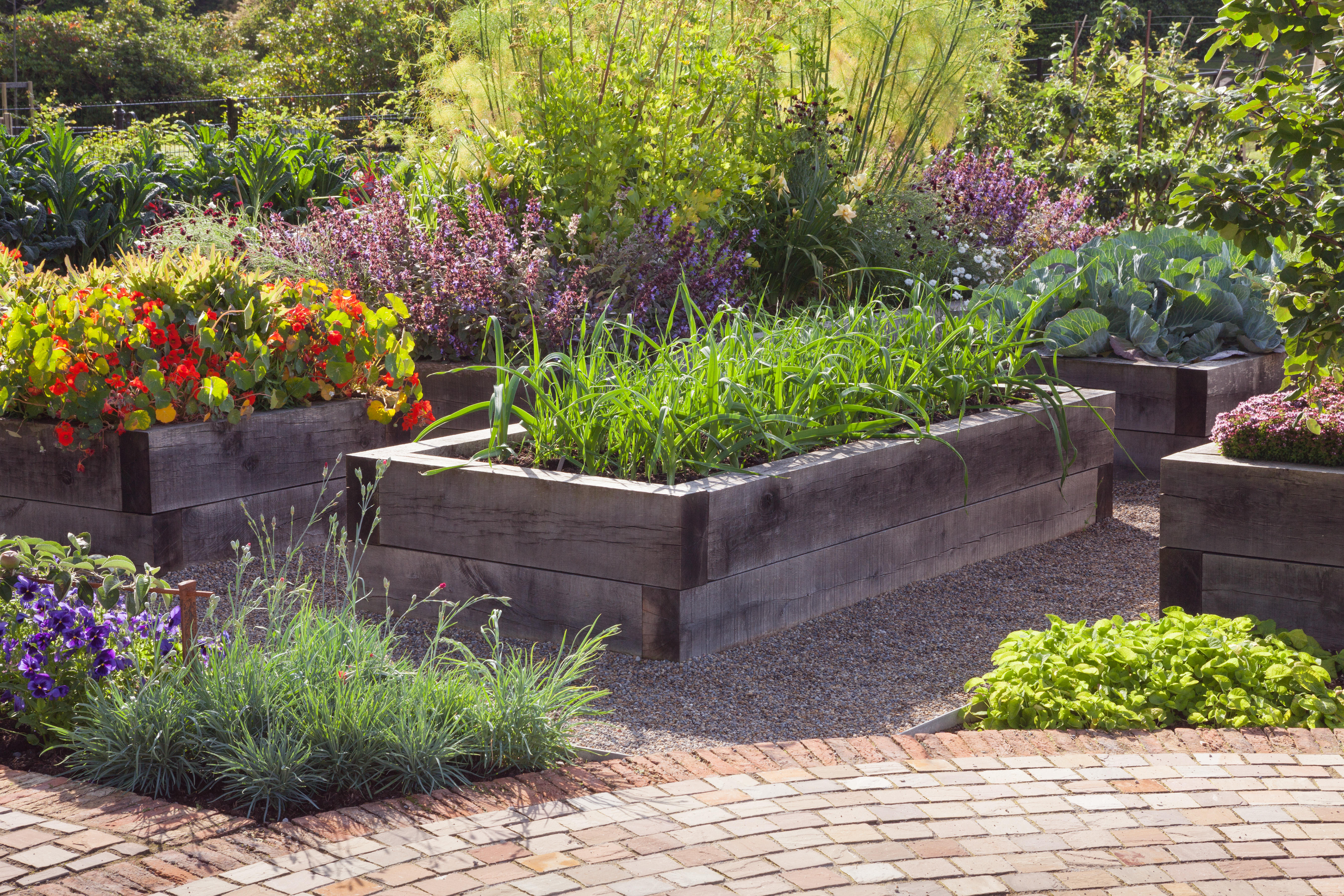This genius gardening hack is the easiest way to plant carrot seeds so that they're neatly spaced
All you need is some corn starch to help you plant a perfect row of carrot seeds


Carrots are one of the easiest vegetables for beginner gardeners to grow, but neatly spacing the seeds during planting? Not so much. If you've found that your carrots end up clustered too closely together, or if you're simply a sucker for a super neat row of crops, we've got the planting hack for you, and it will put an end to the 'thinning' process.
This staple root veg is a is a delicious addition to your modern vegetable garden, but if carrots are spaced too closely in you soil, they won't have room to develop properly. Often, this requires us to resort to a process called 'thinning' whereby you remove some of the baby plants in a row to make space for the others. It's a common practice for carrots and other root crops since they're almost always seeded too closely together, but this genius planting hack fixes that once and for all. (Not to mention, leave you with the neatest vegetable plot ever.) The secret? Corn starch.
Want to find out more about how corn starch can help you plant a perfect row of carrots? We spoke with some professional gardeners who share their insights below.
What is the corn starch hack for planting carrots?

Corn starch and carrots don't usually go hand-in-hand, unless we're talking thickening gravy for a Sunday dinner. Rather than some bizarre culinary concoction, thought, this hack uses a mixture of corn starch as a way of planting seeds evenly.
'Traditional methods of carrot planting involve a rather tiresome process of scattering the minute seeds in the soil,' explains Lina Cowley, a gardener and blogger at Trimmed Roots. 'However, the corn starch hack simplifies this process by ensuring a controlled and efficient way to get those carrot seeds into the ground.'
So, how does it work? As Tony O'Neill, founder of Simplify Gardening, lays out, the hack involves creating a paste of corn starch and water into which carrot seeds are mixed. 'This paste is then "piped" or "dropped" into rows or holes in the soil which ensures that the tiny carrot seeds are evenly spaced, preventing the need for thinning later on,' he says. Whether you're working with a raised bed, container gardening, or a vegetable plot in your backyard, this trick can be applied to any gardening method.
What are the benefits of planting seeds this way?

No matter how fastidious you are, you'll never be able to evenly space your carrot seeds if you're just working with a free hand, especially if you're dealing with a small vegetable garden. 'Fortunately, the primary benefit of this trick is the accuracy, speed, and ease of seed spacing, reducing the need for thinning seedlings,' explains Tony. As Lina adds: 'This means that overcrowding is no longer a concern, as each plant now has ample space to spread its roots and grow.'
The Livingetc newsletters are your inside source for what’s shaping interiors now - and what’s next. Discover trend forecasts, smart style ideas, and curated shopping inspiration that brings design to life. Subscribe today and stay ahead of the curve.
There are some extra perks of using corn starch to sow your seeds, too. 'The paste also offers a sort of protective barrier around the seeds, safeguarding them from pests or being blown away,' says Tony. 'The visible line of the paste also allows gardeners to easily identify where they've sowed, reducing the chances of over-seeding.'
If that wasn't enough, according to Lina, it can also help with weed control. 'This is because the corn starch forms a barrier on the soil surface, retarding weed growth,' she says. 'Your carrots get to hog all the nutrients from the soil without having to lock horns with meddlesome weeds.'
How to ensure a successful carrot harvest

Using corn starch will certainly help produce a neatly spaced bumper crop of carrots, but it won't necessarily guarantee a successful harvest. To seal the deal, here are some additional tips and tricks you'll want to keep in mind.
1. Prepare your soil and make sure it's lightweight
Carrots might be a great vegetable for beginner gardeners, but you do need to know about their necessary growing conditions if you want to grow a healthy crop. That includes a light, sandy loam soil for your carrot seeds to flourish.
'Carrots are fond of loose, well-draining soil, so go ahead and pamper your garden bed,' says Lina. 'Get rid of any obstructions like rocks, debris, or soil clumps that could get in the way of your sprouting carrots.'
2. Mix the seeds and corn starch properly when planting
'While the corn starch hack can be a nifty method, ensure the paste isn’t too thick as it could make it challenging for the seedlings to break through,' explains Tony. According to Lina, a good rule of thumb is to mix in one teaspoon of corn starch for every tablespoon of carrot seeds. 'This ratio ensures an even coating of the seeds and smooth sowing,' she adds.
3. If necessary, thin your carrots after sprouting

While the corn starch hack should at the very least minimize the need for thinning, you might still need to weed out a few weaker plants to ensure your carrots all have plenty of room to grow. 'Do this as soon as your carrots sprout,' says Lina. 'Crowded carrots can stunt growth, so give them space to grow and mature.'
4. Keep the soil consistently moist
Last but not least, carrots like damp soil. Not only does it help them to grow, but it will make it easier to thin and harvest the vegetables when the time comes. 'Keeping the soil consistently moist is especially critical during the germination process,' notes Lina. However, she's quick to remind you that you need to avoid drowning your seeds. 'Water gently and make sure not to overwater,' she says. 'Excessive moisture might cause the seeds to rot.'
What time of year should you plant carrots?
All this talk of carrots is all well and good, but when should you actually be planting them? The answer really depends on where in the world you are. In some cases, carrots might pass as a vegetable to plant in September, but the important thing to remember is that they're a cool-season crop.
'The best time to plant them is in early spring, a few weeks before the last expected frost, or in late summer or early fall, roughly 10-12 weeks before the first expected frost,' says Tony. That might mean the ship has already sailed for you to plant a winter harvest in your area, or perhaps now is the perfect window to get them in the soil before the cold sets in. It will all depend on what hardiness zone you're in.
'If you're looking to gauge the perfect soil temperature for carrot seeds' germination, it's somewhere between 50°F to 80°F,' adds Lina, 'but be sure to check the instructions on the seed packet as different carrot varieties have specific temperature requirements'.
You will need...

Lilith Hudson is a freelance writer and regular contributor to Livingetc. She holds an MA in Magazine Journalism from City, University of London, and has written for various titles including Homes & Gardens, House Beautiful, Advnture, the Saturday Times Magazine, Evening Standard, DJ Mag, Metro, and The Simple Things Magazine.
Prior to going freelance, Lilith was the News and Trends Editor at Livingetc. It was a role that helped her develop a keen eye for spotting all the latest micro-trends, interior hacks, and viral decor must-haves you need in your home. With a constant ear to the ground on the design scene, she's ahead of the curve when it comes to the latest color that's sweeping interiors or the hot new style to decorate our homes.


